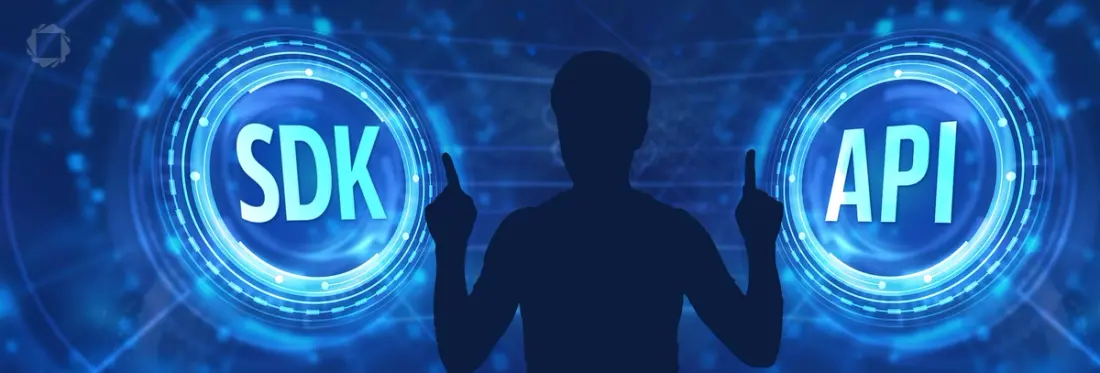API vs SDK: What’s the Difference?
By Isaac Maw | 2024 Dec 11

4 min
Tags
sdk
api
Summary: API and SDK are two common terms in software development, but it can be tricky to remember the difference. In short, an API is a connector between computers or applications, and an SDK is a tool kit.
One complaint I’ve never heard from a programmer is that there aren’t enough acronyms in the industry. From i/o to WYSIWYG, it can be confusing to keep them all straight. API and SDK are two particularly confusing offenders, because they are often used in similar contexts. In this brief article, we’ll sort out the differences. If you’re non-technical, you could even bookmark this article to remember for your next meeting!
What’s the Difference Between SDK and API?
A Software Development Kit (SDK) is a tool kit for building applications and features. For example, the Apryse Mobile SDK is a tool kit for mobile developers to add tons of document processing features to mobile apps.
On the other hand, an Application Programming Interface (API) is an interface between software applications. Just like your keyboard is an interface between you (a human) and the computer, an API provides a selection of services for one piece of software to interact with another. This process is called integration.
Consider this analogy: if your software application was a home theater system, an SDK might be a gaming console, speakers or TV, which you can buy and plug into your system to add specific features. An API is more like a streaming app on your smart TV: a service which connects your home theater to movies and shows. Notably, each component of your home theatre system, like a console, probably comes with the app you need. In the same way, many SDKs include at least one API to allow developers to integrate it into their applications.
Why use an SDK?
Because SDKs provide tested, polished functionality, one of the most popular reasons to use an SDK is because designing and coding that functionality from scratch is too costly, difficult and time consuming. For example, Apryse SDKs bring accurate PDF viewing, creation, editing, annotating, and generation to any web, mobile, server or desktop or framework or application.
Another reason to use an SDK is for control. When you add functionality to your software with an SDK, you can consolidate workflows and eliminate other external tools. This boosts efficiency, usability and security.
Learn more about the scalability benefits of a PDF SDK
When to use an API?
APIs are used when software needs to be connected. This is known as integration. For example, if a factory adds a new machine monitoring software application, that application won’t do anything unless it is connected to the machines. Using APIs, the machine monitoring application has a way to ask other applications and computers for the data it needs.
For example, the documentation for the Apryse Server SDK API explains how to get started using the API to integrate the Server SDK into a variety of different frameworks.
PDF SDK Examples
WebViewer
Deliver exceptional usability and functionality of viewing and interacting with documents backed by years of testing and thousands of customer use cases.
Server
Own the full document and data lifecycle by deploying on your own infrastructure without worrying about third-party server dependencies.
Mobile
Add the best mobile document user experience, complete with a slick Android and iOS UI.
Fluent
Simplify the creation of reports and templates at scale with minimal coding required.
Ready to get started? Contact Sales.
Tags
sdk
api

Isaac Maw
Technical Content Creator
Share this post


